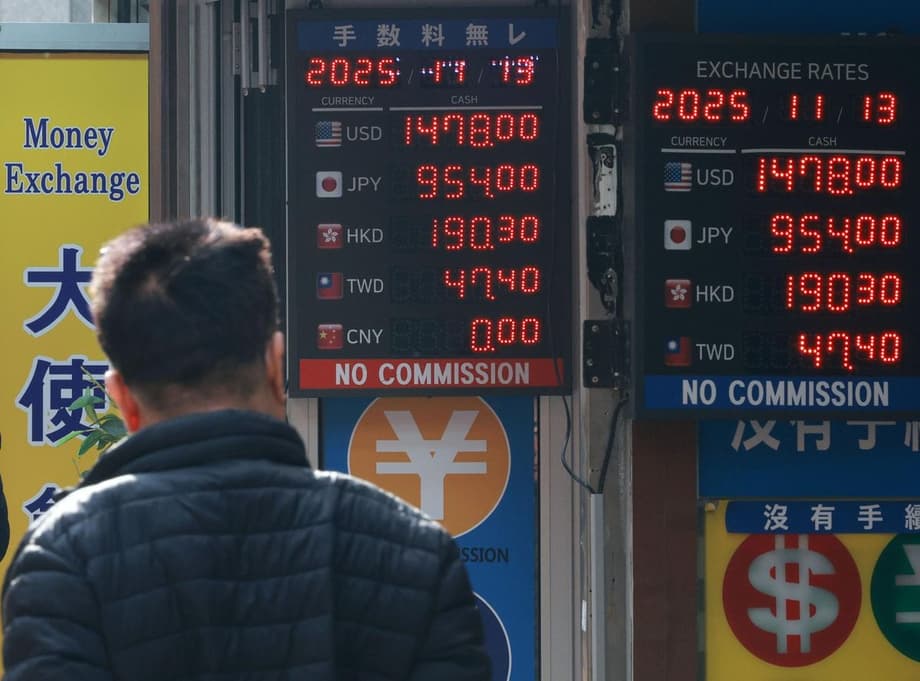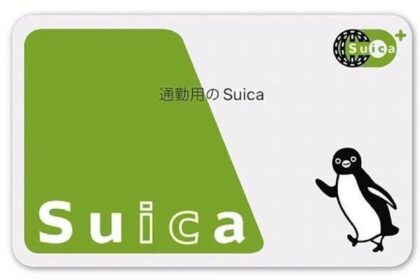Why yen weakness is rattling the won
The South Korean won came under renewed pressure on Thursday, briefly moving past 1,470 per US dollar during morning trade before settling near 1,467.7. Intraday moves touched around 1,475.2, reviving talk on trading floors that the market could test the psychologically important 1,480 level if global conditions do not ease. The latest swing did not happen in isolation. The Japanese yen fell into the mid 155 per dollar zone, its weakest in about nine months, and that slide rippled through Asia’s currency complex. With US yields elevated and investors taking long dollar positions offshore, demand for the greenback has risen across the region.
- Why yen weakness is rattling the won
- What is pushing the yen lower
- Why the won tends to track the yen
- Key market levels and policy lines in Seoul
- A stronger dollar, tighter funding and the regional backdrop
- Winners and losers in Korea from a weaker won
- How yen dynamics in Japan shape the region
- What could steady the currencies
- Key Points
One force sits largely outside Seoul’s control. Expectations in Tokyo that new policy priorities will favor growth-friendly spending and only gradual rate normalization have kept Japanese yields comparatively low. The yawning gap between US and Japanese rates makes the yen less attractive as a holding currency and more attractive as a funding currency. When investors borrow in yen and invest in higher yielding assets elsewhere, pressure on the yen builds. Those same flows can lift the US dollar against the won.
Local dynamics add to the strain. Korean investors have been increasing overseas allocations, lifting short term demand for dollars. Uncertainty around large scale outbound commitments, including a planned investment package in the United States, has also complicated currency management. Market participants say volatility is likely to persist if the yen remains weak, though several support lines stand nearby. Traders have focused on suspected hedging thresholds for one of Korea’s largest institutional investors and on signals from the Bank of Korea that it will curb excessive swings.
What is pushing the yen lower
Four forces tend to set the tone for the yen to dollar rate, and they all point to a soft yen right now. The first is interest rate differentials. The US Federal Reserve kept rates high to cool inflation and growth has held up, while the Bank of Japan (BOJ) has moved slowly toward tighter policy. Even after ending negative rates, BOJ policy remains near zero. The wide gap invites carry trades, where investors borrow in low yielding yen to buy higher yielding bonds and assets elsewhere. The second is BOJ’s past quantitative easing and yield curve control. Years of government bond buying left a very large BOJ balance sheet and compressed domestic yields. That legacy still dampens the yen’s appeal in a world where alternatives pay more.
The third force is growth. Japan’s growth trend has been weaker than that of the United States, in part because of demographics. That discourages expectations for a rapid BOJ tightening cycle. The fourth force is trade. Japan’s once reliable trade surplus has narrowed, pressured by energy imports priced in US dollars. When energy costs rise, the yen can weaken as the country buys more dollars to pay for fuel. Taken together, these forces have kept the yen soft through much of this year.
Signals from Tokyo’s new leadership add to the mix. Prime Minister Sanae Takaichi has promoted advisers who favor growth friendly fiscal policy and a cautious path on rate hikes. Markets read that as tolerance for a weaker yen, at least until the slide threatens stability. While Japan has intervened in the past to slow rapid moves, investors expect warnings and stepped up rhetoric to precede any large scale action. The yen set fresh lows against the euro recently and is testing familiar weak zones against the dollar.
Japan’s finance minister has acknowledged the pain point for households and smaller businesses. After stressing the need for stability in the currency market, Finance Minister Satsuki Katayama described rising costs from a soft currency.
The negative side of the weak yen is becoming more evident.
That candid assessment reflects a reality that is also clear in Japan’s data. When the yen weakens, dollar priced imports become more expensive for Japanese buyers, feeding into producer prices and, to a lesser extent, consumer prices. Companies can hedge and absorb part of the cost, which limits pass through to shop shelves. Yet continued depreciation raises the challenge of protecting margins and wages while keeping prices in check.
Why the won tends to track the yen
The won and the yen often move together. The two economies compete across autos, electronics, and machinery. When the yen drops, Japanese exporters can cut prices or accept lower margins and still remain competitive, a shift that pressures Korean rivals to adjust. Investors notice the rivalry and tend to group the two currencies in the same basket. That behavioral shortcut can amplify co movement even when the fundamental links are not tight.
Correlation data capture this pattern. The 90 day correlation between the yen and the won has strengthened in recent weeks into the neighborhood of 0.58 from near 0.21 in late March, according to market strategists who track regional pairs. Over a longer horizon, the won has one of the strongest links to the yen among emerging Asia currencies. This year’s shift is even more striking because the won spent long stretches after the pandemic trading in lockstep with the Chinese yuan. As the yuan steadied in the second half of the year, attention swung back to the yen.
Officials in Seoul have taken note. Minutes from the Bank of Korea’s October policy meeting acknowledged that market participants often group Japan and Korea as similar Asian stories, regardless of differences in their real economy or financial linkages. That grouping matters because it changes how traders hedge. Portfolio managers who manage regional risk can use the yen as a liquid proxy to offset exposure to other Asia positions. When they hedge or add exposure in that way, the won can move in tandem with the yen even if domestic data are firm.
Key market levels and policy lines in Seoul
Market talk centers on two reference points. The first is the 1,480 won per dollar area, which served as resistance in prior spikes. Traders expect hedging flows to grow if spot approaches that zone. The National Pension Service, one of the world’s largest asset owners, tends to manage currency risk on long dated offshore investments. When large funds increase hedging near a threshold, they must sell some dollars and buy won to balance exposures. That can slow a climb toward a round number target and reduce day to day volatility.
The second reference point is the Bank of Korea’s tolerance for rapid swings. The central bank does not set a fixed level, but it has a mandate to limit disorderly moves. Officials can lean against one way markets through smoothing operations or through liquidity support. Governor Rhee Chang yong has signaled he will act if volatility breaks from fundamentals.
We are prepared to intervene if we detect signs of excessive volatility.
Policy coordination efforts also matter. A recent Korea United States fact sheet outlined steps to balance funding needs linked to bilateral economic projects with the need to keep the foreign exchange market stable. The document stated that Korea would not be required to provide more than 20 billion US dollars in any calendar year and would use best efforts to source dollars outside the open market to minimize strain. It also allowed for adjustments in timing if the market becomes unstable. That guidance eases concern that public sector dollar buying will overwhelm daily liquidity during stress, and it gives officials options to stagger flows.
A stronger dollar, tighter funding and the regional backdrop
Beyond Japan and Korea, much of Asia is coping with a revitalized US dollar. Steady US growth and sticky services inflation kept Treasury yields high, and the Fed’s path toward rate cuts has been slower than investors once thought. The result is a yield gap with Asia that continues to favor dollar assets. Currencies from the yen to the yuan and the rupee have lost ground this year, forcing central banks to balance support for growth with the risk of imported inflation.
Short term funding strains added a twist. Analysts have pointed to a squeeze in US dollar liquidity tied to shifts in government spending and heavy funding demand from large technology companies. Usage of the Federal Reserve’s standing repo facility has climbed at times, a sign that cash markets have tightened. Funding squeezes rarely last long, and they can ease once fiscal bottlenecks clear or central banks adjust operations. If that happens, some of the mechanical lift behind the dollar would fade.
In Korea’s bond and equity markets, the alignment has been unusual. Government bond yields and the exchange rate rose together, even as stocks showed resilience. Strategists attribute the pattern to shifting expectations about the Bank of Korea’s future path rather than to credit stress. As confidence steadies around the policy outlook and short term dollar funding conditions calm, both yields and the exchange rate tend to stabilize.
Winners and losers in Korea from a weaker won
A softer currency can lift parts of Korea’s economy. Exporters receive a translation boost when they bring home overseas sales. They can also gain price competitiveness against rivals. The timing is helpful for sectors riding a cyclical rebound, such as semiconductors. If dollar prices for chips are rising, a weaker won can magnify revenue and profit growth for major manufacturers that sell globally.
The downside shows up in energy and food import bills. Korea imports most of its fuel, and oil is priced in dollars. A weaker won increases costs for refiners, airlines, and households. Pass through to consumer prices in Korea depends on many factors, including hedging by importers, competition among retailers, and government policies. The Bank of Korea seeks to contain inflation pressures without choking off growth, a difficult task when currency weakness lasts for many months. If global oil prices remain range bound or fall, the inflation hit from a softer won is smaller, and the export boost can dominate.
Equity strategists argue that context matters. When the dollar strengthens because US yields rise for positive growth reasons, foreign investors often lock in gains in Asian markets with large year to date advances. That profit taking can weigh on the KOSPI and KOSDAQ. When the funding squeeze passes and rate expectations ease, foreign capital can return. In that case, a still soft won can serve as a tailwind for exporters without causing a sustained selloff in equities.
How yen dynamics in Japan shape the region
Japan’s experience helps explain why currency moves carry different effects for producers and households. In recent years, exchange rate swings have had a clearer impact on domestic prices, especially for imported inputs. Studies of price pass through in Japan show that since 2021 exchange rate changes have a stronger link to producer prices than to consumer prices. One estimate places the effect of exchange rate shifts on producer prices at roughly 0.023 and on consumer prices at about 0.005 during 2021 to 2024. Hedging strategies, competitive pressure, and the use of profit margins as buffers limit what reaches consumers, but cost absorption has limits if depreciation persists.
Trade invoicing patterns matter. Much of Asia’s trade is invoiced in US dollars, even when neither party is the United States. That dominant currency practice means a weaker yen raises the cost of dollar invoiced imports for Japanese buyers, lifting input costs even if export invoice prices change little. For exports, Japanese companies often price in the buyer’s currency, which can delay or dilute the effect of an exchange rate move on sale prices.
Structure matters too. Decades ago, yen weakness was unambiguously positive for Japan’s real economy because exporters sold a larger share of goods made at home. Now many Japanese manufacturers produce through overseas subsidiaries. The benefits of a soft yen show up more in inbound tourism and in profit translation for overseas earnings, while the drawback from import price inflation is broader. That blend shapes competitive behavior across Asia. When Japanese producers choose to defend market share, the pricing environment for Korean peers gets tougher.
What could steady the currencies
Several paths could halt or reverse the latest moves. A downturn in US growth would likely pull Treasury yields lower and cool the dollar. Rate cut expectations at the Fed would firm up, carry trades would look less attractive, and the yen could rebound. That turn would ease pressure on the won. Even without a growth scare, a gentle drift lower in US yields could calm dollar demand and reduce volatility.
A policy shift in Tokyo would also matter. If the BOJ signals a faster pace of tightening or if Japan’s Ministry of Finance intervenes to slow a disorderly slide, the yen could strengthen. Intervention is most effective when it aligns with fundamental shifts or when moves become too fast for markets to digest. Many investors believe Tokyo is more sensitive to the speed of depreciation than to exact levels, although market chatter often focuses on round number thresholds.
On the Seoul side, steady economic data and clear communication can help. Korea’s growth beat expectations in the third quarter, the interest rate gap with the United States has narrowed, and semiconductor exports are recovering. Officials have also made clear they will manage volatility. In recent sessions, verbal signals and operational support helped lift the won off intraday lows. Guidance that public sector dollar needs tied to bilateral projects will be paced and diversified away from the open market is another stabilizer. With those supports in place, many investors view the 1,480 line as a challenging ceiling unless global dollar strength accelerates again.
Key Points
- The won briefly moved past 1,470 per US dollar and touched around 1,475.2 intraday before closing near 1,467.7.
- The yen weakened into the 155 per dollar area, a nine month low, raising co movement pressure on the won.
- Wider US Japan rate differentials, carry trades, and growth and policy expectations in Tokyo are keeping the yen soft.
- The 90 day yen won correlation climbed into the neighborhood of 0.58, one of the strongest links in emerging Asia.
- Traders are focused on the 1,480 zone, potential hedging by large Korean institutions, and Bank of Korea actions to curb volatility.
- Japan’s finance minister warned that the negative side of yen weakness is becoming more evident as import costs rise.
- US dollar strength, short term funding strains, and policy uncertainty have amplified regional currency moves.
- A weaker won aids exporters and the chip cycle but raises import costs for energy and food, posing an inflation risk.
- Stabilizers include narrowing Korea US rate gaps, firmer growth data, paced public sector dollar funding, and potential shifts in US yields or BOJ policy.












